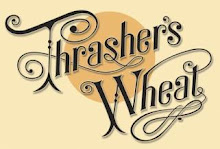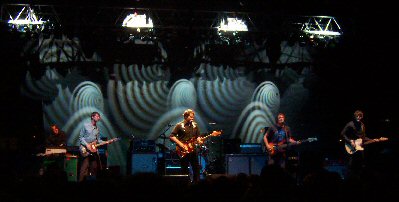Larry "L.A." Johnson: 1947 - 2010

Larry "L.A." Johnson: 1947 - 2010
It is with great sadness that we report that Neil Young's long time film maker and producer Larry "L.A." Johnson passed away yesterday. He was 62.
To say that this is a terrible blow to Shakey Pictures and the Neil Young community is a vast understatement. "L.A."'s contributions to the Neil canon are immeasurable and will be missed tremendously.
Neil Young said in a statement:
"He never lost the eye and ear of an original artist, one unafraid to listen to himself first. Even more, he also kept his playful spirit and sense of humor, the things that sparked his heart for a lifetime spent doing what he loved best: listening to music and making movies."
Johnson was one of the original East Coast guerrilla documentary filmmakers in the 1960's. He worked on the legendary "Woodstock" film of the 1969 festival and was nominated for an Academy Award in the sound category.
It was at Woodstock where L.A. and Neil Young first met. Johnson went on to film CSNY at the Fillmore East in 1970 and produce Neil Young’s film Journey Through the Past.
Johnson also filmed Young’s concert film, Rust Never Sleeps, and was also producer of Young’s feature film Human Highway. He directed Young’s 1986 Cow Palace concert "Live From a Rusted-Out Garage" for Pay Per View -- arguably the "single greatest video document of Neil Young and Crazy Horse."
From Wikipedia:
As head of Young’s film production company, Shakey Pictures, Johnson has produced Young’s concert videos, Weld, Year of the Horse, Neil Young: Silver and Gold, and Neil Young: Red Rocks Live, directing the latter two as well. Johnson continued working with Young on his many projects including the long-awaited Archives Volume One and was co-producer of Young’s ambitious concept album Greendale (2003).
Johnson also co-produced Young’s 2006 protest album, Living with War and served as in-house video director on many of Young’s tours, including the CSNY "Freedom of Speech" tour, which drew heavily from Young's anti-war album. He produced the albums' music videos and co-produced the film CSNY/Déjà Vu.
Johnson continued to work with Young on his latest film project, a documentary about converting older gas-guzzling automobiles into fuel-efficient, low emission, environment-friendly vehicles titled, "Linc-Volt." Johnson was heavily involved in the both the video and physical production of the two decade gestation of Young's "Archives," and was credited as the producer of Volume 1, released in June, 2008.
From official Neil Young Times website:
"Meeting Neil Young at Woodstock would begin a four-decades long partnership that continued right up to the present, with the release of the Grammy Award-nominated 'Neil Young Archives: Volume I' Blu-Ray box set, which has been described as a groundbreaking work combining all the various mediums of music, film and print in a way that has never been done. Mr. Johnson was instrumental in creating this revolutionary new Blu-Ray Media platform, which may very well be recognized as the enduring standard to experience music and other historical events in the digital age."

Larry "L.A." Johnson and Trevor “T.R.” Hosier with Linc-Volt
Photo courtesy of Youngtown Rock Museum
From Trevor “T.R.” Hosier with Youngtown Rock Museum:
Just got off the phone with Will Mitchell...Larry's partner. We are in shock. One didn't have to know L.A. Johnson for long to determine he was a great talent and a great guy. Modest, bright, and witty, he made a big impression. My wife Brenda and I took great satisfaction in knowing we would stay in touch with Larry...he referred to us as "his friends from Canada".
Apparently he died while preparing to go to a hockey game, his great passion in recent years. A huge loss to Neil and friends, love and best wishes go out to all who grieve his passing.
Although gone, its clear this great man will not be forgotten.
Trevor Hosier
Youngtown Museum
From Neil Young News: Larry Johnson & Elliot Roberts Interview on Greendale:
Question: I've never seen anything like Greendale before.
Larry Johnson: Well, here at Shakey Pictures [Neil Young's production company] we pride ourselves on things like that. (laughs)
Question: It's been quite a while since Neil Young's last directorial effort [1982's Human Highway]. How did this movie version of Greendale initially come about?
Eliot Roberts: It started when Neil began writing. We had already set up the recording studio to be filmed - from the very beginning we had blue screens set up so we could film the band as they laid down their tracks. Then Neil started bringing in these great songs about these amazing characters, and once things started rolling, the film just started to evolve.
Question: What was your role in the recording of the album?
Larry Johnson: I produced the record. Neil came into the studio with two members of Crazy Horse [Ralph Molina and Billy Talbot] and started recording. It was really interesting - we had a small crew there to film everything and once Neil started playing these songs about characters he created, after we'd get them down, all of us would ask, "What about grandpa? What happened to grandpa?" All these plots and relationships had become developed. Neil would just come in every day with a new chapter to the Greendale story. The town of Greendale became real.
Question: When did it go from being a concert movie to becoming a full-fledged musical of sorts?
ER: Probably about halfway through. The story didn't really finish evolving until all the songs were finished, but as this was all happening, we knew that there was going to be something more to Greendale than just blue screens on the wall.
Question: Greendale, at least for public consumption, started off as a series of live concert performances. Was the film shot before these shows?
Larry Johnson: Yeah. We filmed the movie and then the tour was an extension of that. We all got really into it. The shows got really good and everyone started wanting more out of this little town. Whether it was a live show or a movie or a filmed concert - Greendale was a thing that could really just go on and on. Greendale is such a dysfunctional town. It's typical small-town America: Everyone has a story. Everyone has good and bad sides.
Question: Was it always intended to be an elaborate stage production?
ER: We actually did an acoustic solo tour of Europe first, and as that was happening, the idea for the stage show became a reality. It wasn't until we came back to the States to do another series of acoustic shows that we really started developing the more theatrical elements of Greendale.
Question: Greendale had been through so many permutations by the time it hit the festival circuit. What was it like seeing the finished film?
ER: I've been involved with the project from the recording process to the very end of the whole thing. It's a very long process, but you never get a chance to sit back and just look at it. It's constantly evolving.
Larry Johnson: For me, the movie really came alive in the editing process. It came alive at live shows as well, but it wasn't until we took it on the road - we showed at Toronto and in Texas and a bunch of other places - that it really kicked in. It was an interesting run.
Question: The film has a very down-home feel. Where did you shoot?
Larry Johnson: We shot in and around Half Moon Bay in Northern California - we shot a little in Pescadero, as well. It was really great - there was a great deal of spontaneity in making the film. We shot near our homes, we worked with our friends. It was a really wonderful process.
Question: How long did it take to shoot and edit the film?
Larry Johnson: We shot for about thirteen days. Then we did some pick-ups after the first round of editing. And then the editing process lasted about two months. It wasn't very long.
Question: What's next for Shakey Pictures?
Larry Johnson: We're getting the extended version of Human Highway ready for DVD later this year. Shakey Pictures has been very active for the last few months, and we're just going to keep going until our projects are finished. With Greendale and then this - it's been a great experience.

L.A. Johnson and Elliot Roberts
SXSW Panel, Austin, Texas
From Guitar Player, Shakey Pictures Larry "L.A." Johnson on the Archives:
“We had cameras around all the time, because Neil has always been interested in film,” said Johnson. “And we’ve been assembling all this stuff for decades, but we waited until technology caught up with what Neil envisioned for the Archives. He didn’t want this material released on videotape, and he wasn’t all that happy with DVD. It wasn’t until Blu-ray where we thought the media would do the material full justice, visually and sonically.
When asked about The Neil Archives Bluray Disc Live downloads, Larry Johnson commented:
“This keeps it fresh for Neil, but it drives me crazy,” said Johnson, who is managing delivering updates to fans. “He keeps giving and giving.”"

Our hearts go out to all at Shakey Pictures and the Neil Young family.
We'll miss you L.A. Thanks for the memories. Your work will live on.
"Sing a song for freedom
sing a song for love
sing a song for depressed angels
falling from above"
And light a candle.
UPDATE: Neil Young pays tribute to L.A. on final Tonight Show With Conan O'Brien with "Long May You Run".
UPDATE II: Also, see official Neil Young Times website obituary and tribute.
Labels: Larry "L.A." Johnson, neil young




































 Concert Review of the Moment
Concert Review of the Moment







![[EFC Blue Ribbon - Free Speech Online]](http://www.thrasherswheat.org/gifs/free-speech.gif)











 Submit Your Neil Links Now!
Submit Your Neil Links Now!























 Four Dead in Ohio
Four Dead in Ohio














